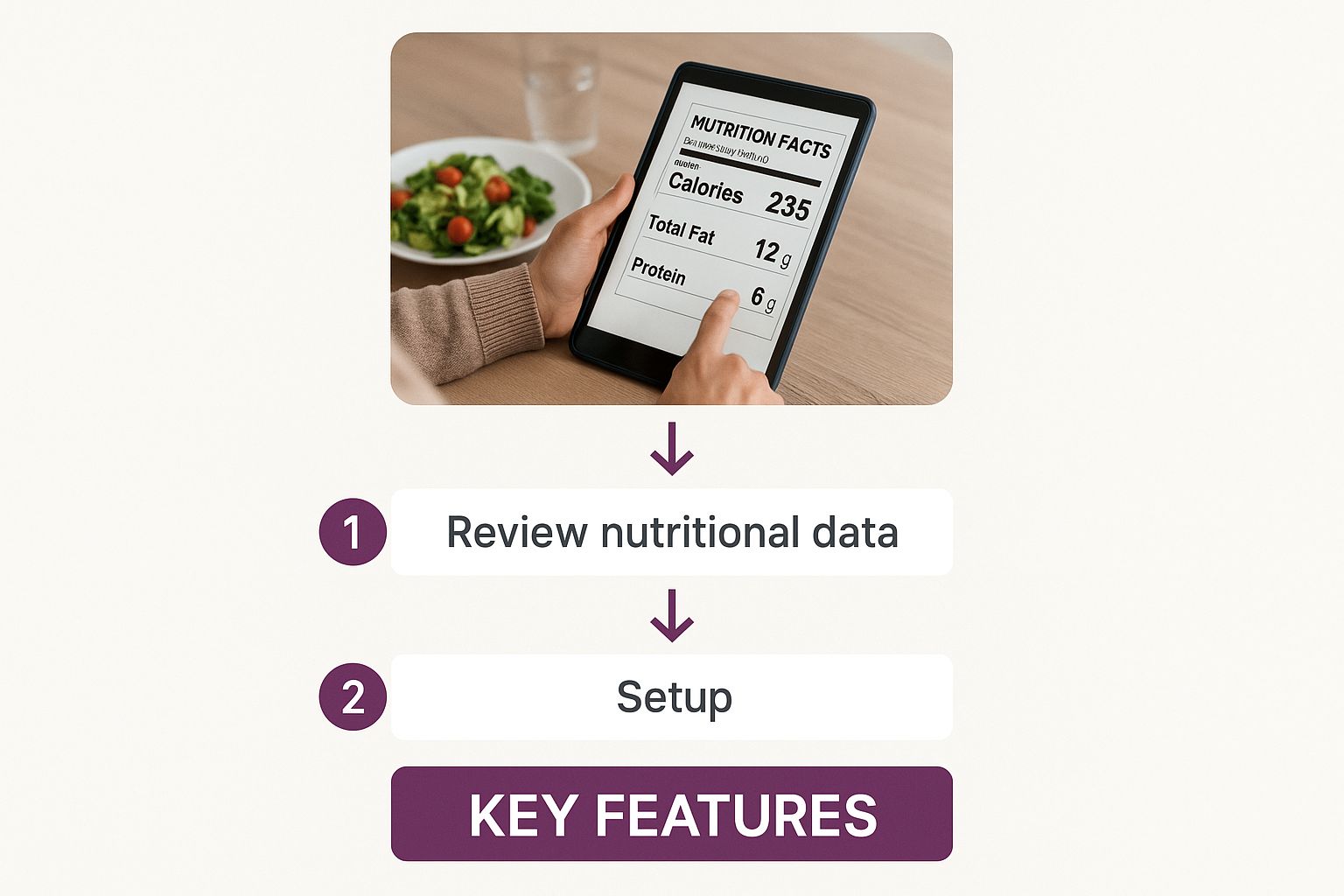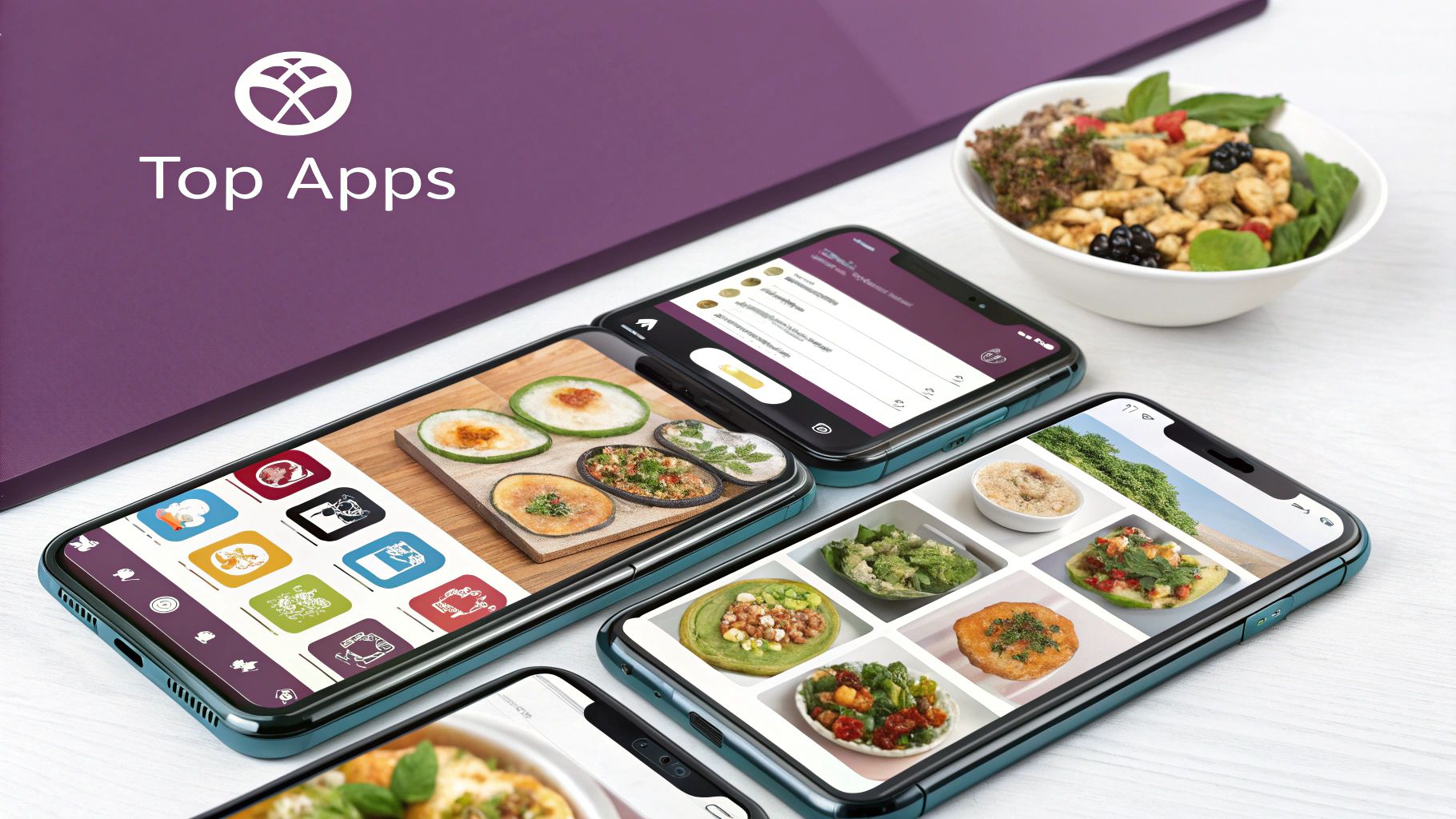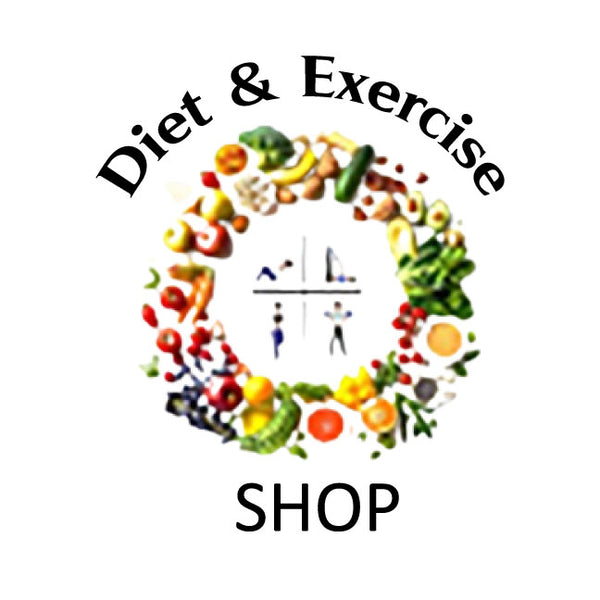
Meal Planning Apps for Weight Loss That Actually Work
The right meal planning app can completely change the game for weight loss. It turns the often-confusing world of dieting into a straightforward, manageable routine. Think of it as having a personal nutritionist in your pocket. It takes the guesswork out of eating right. It gives you clear meal plans, tracks your intake, and even builds your grocery lists to keep you focused.
How Meal Planning Apps Actually Make Weight Loss Easier
It's easy to dismiss these apps as just fancy recipe finders, but they're so much more. They are powerful allies on your weight loss journey. They simplify nutritional science and end that daily "what should I eat?" stress. That structure is the secret sauce to making healthy choices feel like second nature.
One of the biggest hurdles these apps help you clear is decision fatigue. When you have a plan ready, you're less likely to make an impulsive, unhealthy choice when hungry. Instead of grabbing the first convenient thing, you have a pre-planned, nutritious meal waiting.
A Structured Path to Better Nutrition
The real magic is the clarity these apps bring to your diet. Most high-quality apps offer features that work together to keep you on track. Here's a breakdown of what to look for when choosing an app to support your weight loss goals.
Key Features in Top Weight Loss Apps
| Feature | Why It Matters for Weight Loss | Example App |
|---|---|---|
| Calorie & Macro Tracking | Automatically calculates your daily intake to ensure you're hitting your calorie deficit and nutrient targets without tedious manual math. | MyFitnessPal |
| Customized Meal Plans | Generates meal suggestions based on your specific dietary needs, whether you're keto, vegan, gluten-free, or have certain allergies. | PlateJoy |
| Integrated Grocery Lists | Creates a shopping list from your weekly meal plan, saving you time at the store and preventing those impulse buys that derail your progress. | Mealime |
This level of organization makes sticking to a plan much more achievable. Just look at the success of an app like MyFitnessPal—it's been downloaded over 200 million times worldwide. That statistic, found in various diet and nutrition app statistics, shows how many people rely on these tools for structured weight loss support.
Creating a Powerful Feedback Loop
For a complete picture of your progress, you need more than just a meal plan. When you pair your app with a smart device, you create a powerful feedback loop. You can see precisely how your new eating habits are affecting your body, not just the number on the scale.
The app for a device like the Smart Body Fat Scale syncs data directly to your phone. This gives you a detailed dashboard of your health, tracking over 13 key body composition metrics.
This detailed data is invaluable. It tells you if you're losing fat while maintaining muscle—a critical sign of healthy, sustainable progress. This combination of planned eating and precise tracking keeps you informed and motivated for the long haul.
Choosing the Right App and Tools for Your Lifestyle
With so many meal planning apps out there, finding the right one can feel overwhelming. The secret is to focus on what you actually need for your weight loss journey. The best tool is one that fits into your life, not one that makes you rearrange it.
Start by thinking about your dietary requirements. Are you following a keto, vegan, or gluten-free plan? If so, look for an app that specializes in that area.
Matching App Features to Your Diet
Next, consider how you like to operate. Do you want to track every single macronutrient, or do you just want simple, healthy recipe ideas and a shopping list that writes itself? A great app will match your personal style, whether you're a meticulous planner or someone who needs quick suggestions.
The best apps offer smart features like automated menu planning, allergy filters, and the ability to sync with your fitness tracker. This closes the loop between your diet and your daily activity.
Support for Unique Life Stages
Our nutritional needs change as we move through different phases of life. For new moms, postpartum recovery demands specific dietary support to heal and restore energy. This is when a specialized app can make a huge difference.
You can take this a step further by pairing your digital tool with physical support. Combining a postpartum-focused meal plan from your app with something like the 3 In 1 Postpartum Belly Support Recovery Wrap creates a more complete recovery strategy. It provides abdominal support, helps reduce swelling, and supports core muscles while your diet provides the internal nourishment needed for healing.

Ultimately, the app you'll stick with is the one that feels like it was made for you. If you need some meal ideas to get started, check out our guide on healthy meal prep ideas for weight loss.
Syncing Your Meals with an Effective Workout Routine
You can't out-train a bad diet. Real, lasting weight loss happens when you nail both your nutrition and your fitness. A good meal planning app connects what you eat with how you move, creating a powerful synergy that gets results.
It’s all about timing. The right fuel before a workout can make the difference between a sluggish session and a personal best. What you eat afterward rebuilds your body. Your app can be the command center for all of it.
Fueling Your Fitness Goals
Think of food as high-performance fuel. Before a tough cardio session, you need energy that’s ready to go. A small meal with complex carbs about 60-90 minutes before you start gives your body sustained energy. I use my app to schedule oatmeal or a banana to make sure I'm ready to push hard.
After hitting the weights, your body’s needs change completely. Strength training creates tiny tears in your muscles, and protein is the key to patching them up so they grow back stronger. A protein-rich meal within an hour of your workout dramatically helps with muscle repair.
Let's say you just finished a tough full-body workout using a Resistance Bands Set. Your muscles need nutrients. This is the perfect time for that pre-planned grilled chicken salad or protein shake. For workout ideas, this quick resistance band workout video is a great place to start.

Resistance bands are fantastic because they are versatile and portable, allowing you to get a great workout at home or on the go. You can easily adjust the intensity to match your strength level, which works perfectly with a meal plan designed to build lean muscle.
Don't Forget Hydration
It’s easy to focus on protein and carbs, but water is just as crucial. If you’re even slightly dehydrated, your strength and endurance can plummet. Use your app to set reminders to drink water all day. Most apps have a feature for logging your intake, which is a simple way to stay accountable. Also, make sure your meals are packed with fruits and vegetables for essential vitamins and minerals.
Customizing Your Plan to Avoid Plateaus
Any meal plan can start to feel like a chore. Eating the same meals day-in and day-out is a fast track to boredom. Once the excitement wears off, it's easy to fall back into old habits.
This is why flexibility is the secret weapon for long-term success. Think of your meal planning app as a creative co-pilot. It’s a tool to help you adapt and experiment. When your food is enjoyable, sticking to the plan becomes second nature.
Swapping Ingredients and Discovering Favorites
One of the best features of a quality app is the ability to easily swap ingredients. Don't feel like chicken tonight? Switch it to salmon or tofu. A good app will instantly recalculate the nutritional info for you. This simple function is a game-changer for avoiding "recipe fatigue."
Also, treat the app's recipe database as your personal cookbook. Dive in and look for new meals that fit your calorie and macro goals. This is how you build a healthy, lasting relationship with food.
Breaking Through Weight Loss Plateaus
The dreaded plateau is when your weight loss stalls. It’s frustrating, but it’s a normal part of the process. It's a sign that your body has adapted to your current routine. Instead of getting discouraged, see it as a signal to make a strategic shift.
- Recalibrate Your Calorie Goals: As you lose weight, your body's energy needs decrease. You have to adjust your intake to maintain a calorie deficit. Your app can help you recalculate this.
- Fine-Tune Your Macros: Sometimes a small change is all it takes. Maybe you need more protein to feel fuller, or perhaps adjusting your carb intake will do the trick.
One of my favorite ways to inject variety and nutrients into a diet is with smoothies. They're quick, customizable, and perfect for breakfast or a post-workout meal. Having the right tool makes this incredibly simple.
The Portable Blender is a perfect example of a gadget that makes this dietary flexibility easy.
With its USB-rechargeable battery and compact design, you can blend new combinations of fruits, greens, and protein powders in seconds, anywhere. It removes the hassle of a big kitchen blender, making it effortless to get a wide range of micronutrients every day without getting bored.
Tracking Progress Beyond the Scale
It's easy to get fixated on the number on the scale. But that number only tells a tiny fraction of the story. Real progress is about how you feel, how your clothes fit, and how your body is changing for the better.
The best meal planning apps get this. They often include features that go beyond calorie counting. You can log body measurements, upload progress photos, and note your energy levels. This creates a richer picture of your health journey, which is more motivating than a single number.
Redefining Success with Body Composition
Here’s a classic scenario: you’re sticking to your plan and workouts, but the scale won’t budge. This usually means something amazing is happening—you're building lean muscle while shedding fat.
Muscle is much denser than fat, so your weight might stay the same as you get leaner and stronger. This is a good thing! Combining your meal plan with strength training is a game-changer. Using tools like a set of Adjustable Dumbbells at home is a fantastic way to build that lean muscle. More muscle means a higher metabolism, helping you burn more calories around the clock.
Their compact design lets you quickly switch between weights, from 5 to 52.5 pounds. This makes it simple to progressively challenge your muscles and build strength without needing a whole rack of equipment, saving space and money.
Key Metrics for a Fuller Picture
To get a true sense of how far you've come, look beyond the scale. Focus on these metrics that reflect real change.
- Body Measurements: Track the circumference of your waist, hips, and arms. Losing inches is undeniable proof you're losing fat.
- How Your Clothes Fit: Is that favorite pair of jeans feeling looser? This is a real-world victory the scale can't tell you.
- Energy Levels: Having more energy to crush a workout or get through your day is a massive sign of improved health.
- Mood and Mental Clarity: A well-balanced diet fuels your brain. Note improvements in your mood and focus.
Building muscle while eating well requires a careful balancing act. You need a slight deficit to encourage fat loss, but not so much that you sap your energy for muscle growth. For a deeper dive into this concept, it's worth learning what a calorie deficit is and how to dial it in for your goals. Shifting your focus to these indicators helps you build a healthier relationship with your body.
Got Questions About Meal Planning Apps? Let's Talk.
Jumping into a meal planning app always brings up some real-world questions. What happens when you get invited to a dinner party? Can you stick to this on a tight budget? Let's get into it so you can start with confidence.
What Happens When You Eat Out?
One of the first things people worry about is their social life. A meal plan doesn't mean you're stuck at home. The best apps are built for real life. Most top-rated apps have massive databases of restaurant foods. You can often search for the restaurant and find its menu items.
If your dish isn't listed, just break it down. If you ordered grilled salmon with quinoa and asparagus, log each component individually. The goal is awareness, not perfect tracking. You can enjoy a meal out without derailing your progress.
Will This Work on a Tight Budget?
Yes, and you might even save money. A good meal plan is one of the best budget tools out there. When your app gives you a specific grocery list, you know exactly what you need at the store. This means no more impulse buys and a lot less food waste.
How Do You Handle Picky Eaters?
This is a classic problem, especially for families. The good news is that many apps are designed with this in mind. Look for an app that lets you filter recipes heavily. Being able to exclude specific ingredients is a game-changer.
Another trick is planning "deconstructed" meals. A taco or burrito bowl night is perfect. You plan all the healthy components, and then everyone builds their own plate. It gives picky eaters a sense of control while the whole family eats well.
At Diet and Exercise, we know that having the right tools is crucial for hitting your health goals. Check out our collection of fitness equipment and apparel designed to support you every step of the way. You can find everything you need to build a stronger, healthier you at dietexerciseshop.com.
